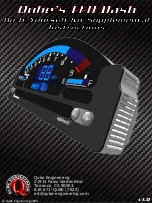
Holden Trailblazer Owner Manual (GMSA-Localizing-Australia - 10460368) -
2017 - crc - 6/29/16
Driving and Operating
199
Brakes
The brake system comprises two
independent brake circuits.
If one brake circuit fails, the vehicle
can still brake using the other brake
circuit. However, the braking effect
is achieved only when the brake
pedal is pressed firmly.
Considerably more force is needed
for this. The braking distance is
extended. Contact a Holden Dealer.
When the engine is not running,
such as when the vehicle is being
towed and the brake pedal has
been depressed once or twice,
braking requires greater force.
Caution
Do not drive with your foot resting
on the brake pedal. This will
accelerate wear of the brake
components and cause the
brakes to become overheated.
Antilock Brake
System (ABS)
ABS:
.
Continuously monitors the
vehicle's braking system,
preventing the wheels from
locking.
.
Allows maximum braking effort
while full steering control is
retained, even in the event of
panic braking.
{
Warning
Do not let this special safety
feature tempt you into taking risks
when driving. Traffic safety can
only be achieved by adopting a
responsible driving style. You
should always adjust the vehicle's
speed to suit road and traffic
conditions. Always maintain an
adequate distance to the vehicle
in front of you.
Operation
ABS operation is noticeable by
pulsing of the brake pedal and the
noise of the regulation process.
The initial self-check may also be
audible.
Keep the brake pedal fully pressed
throughout the braking process,
without pumping it. Pumping the
brake pedal can reduce brake
efficiency.
If the vehicle is travelling above
50 km/h and ABS braking occurs,
the centrally mounted rear high-level
brake lamp will flash.
{
Warning
When the ignition is turned on,
the
!
warning light briefly
illuminates. The self-check of the
ABS may be audible.
(Continued)
















































